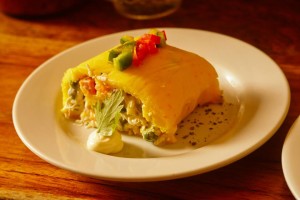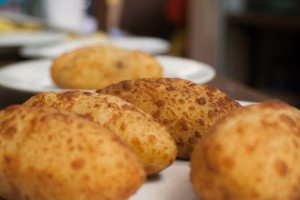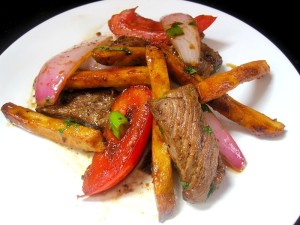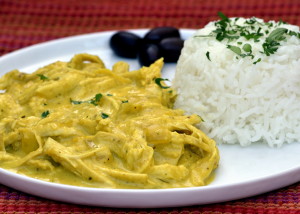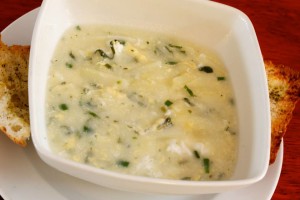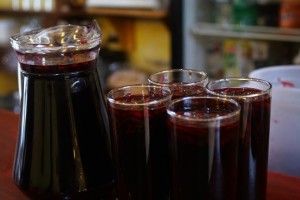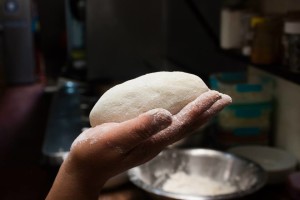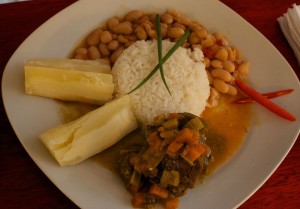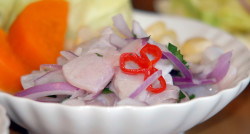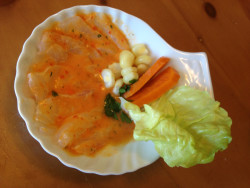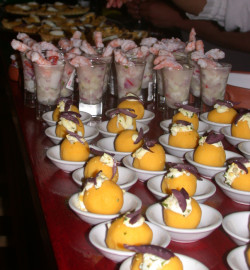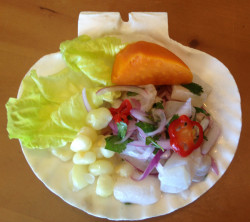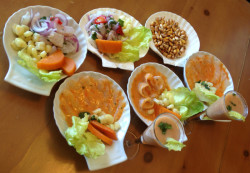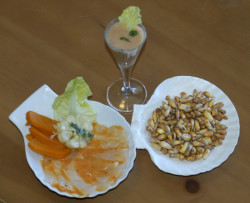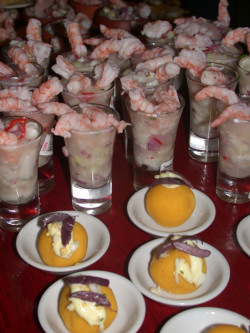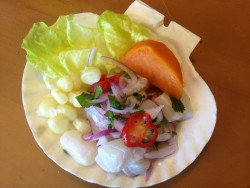Peruvian cuisine is one of the most fascinating food cultures in the world. It is unmatched in both its diversity and individuality. It is a fusion of many different cultures; it retains unique elements of each, yet is a distinct cuisine all its own. Its main influences are the indigenous Inca peoples; the Spanish conquistadors; African slaves brought by the Spanish; and large waves of immigrants who became integral components of the cultural and culinary framework.
The name Causa comes from the Incan Quechuan word ‘Kausaq’, meaning “that which gives life.” During the colonial period in Peru, the newly arrived Spaniards adapted many of the native foods and combined them with foods they brought from Europe, creating the distinctive Peruvian cuisine that exists today. Causa is one of these hybrid dishes: a combination of the ancient potato, avocado and aji amarillo that are all native to Peru, and the lime, garlic, and chicken imported from Europe.
Hearty yet refreshing, cool yet mildly picante, causa is an intriguing mix of the abundant flavors found in the region. This can easily be served as a vegetarian dish with steamed vegetables, mayonaise, or Huancaina sauce.
Golden like the Inca sun. On opening it we discover a treasure filled with tradition, flavor, and love (cariño) where we can recognize ingredients and techniques of different cultures in each bite. This and much more is our Andean stuffed potato, la papa rellena.
The Andean stuffed potato is filled with ground beef, hard-boiled egg, olives and raisins sautéed with onions, garlic and spices, deep-fried gently and served with salsa criolla (creole sauce). For Vegetarian version we use quinua, spinach, carrots and peas.
Lomo Saltado (Peruvian Stir-fried Beef and Potatoes) is one of the most popular Peruvian dishes and symbolizes like no other the fusion of Peruvian ingredients with Asian techniques of preparing food. Lomo Saltado is made of sliced beef stir stir-fried with red onions, tomatoes, yellow Peruvian chilies (aji amarillo), soy sauce, vinegar and cilantro. The stir fry is mixed with French fries and served with rice.
The Chinese made such an impact on Peruvian food and culture that it affected the local language and introduced new words. In Peru today, there are thousands of Chinese restaurants known as Chifas after the Cantonese word for eating, while ginger is called kion, also a Cantonese word, instead of the Spanish “gengibre”. No one knows exactly when aji amarillo was first combined with kion, soy sauce, beef, french fries, onions, and tomatoes in a wok, yet the result is one of Peru’s comfort foods and most traditional of dishes, the Lomo Saltado or Chinese-Peruvian beef stir-fry.
The roots of this recipe are said to hail from the years following the French revolution in the late eighteenth century. As the French aristocracy lost their power (and quite often their heads), their chefs had to look elsewhere for work. Many travelled far and wide to find families who would hire them. In Peru French chefs were hired by wealthy families to prepare their food. As with any trained chef, they used their creative skills in the culinary arts to come up with dishes that blended Peruvian ingredients with French cuisine.
One of the dishes that resulted from this tasty marriage was Aji de Gallina. Local Peruvian peppers were employed along with common French ingredients like garlic, cheese, and olives to create an excellent recipe. The peppers used in Aji de Gallina may also date back much further as the Incas were also known to have a recipe that combined hot, Peruvian peppers with a native gamebird similar to a chicken.

